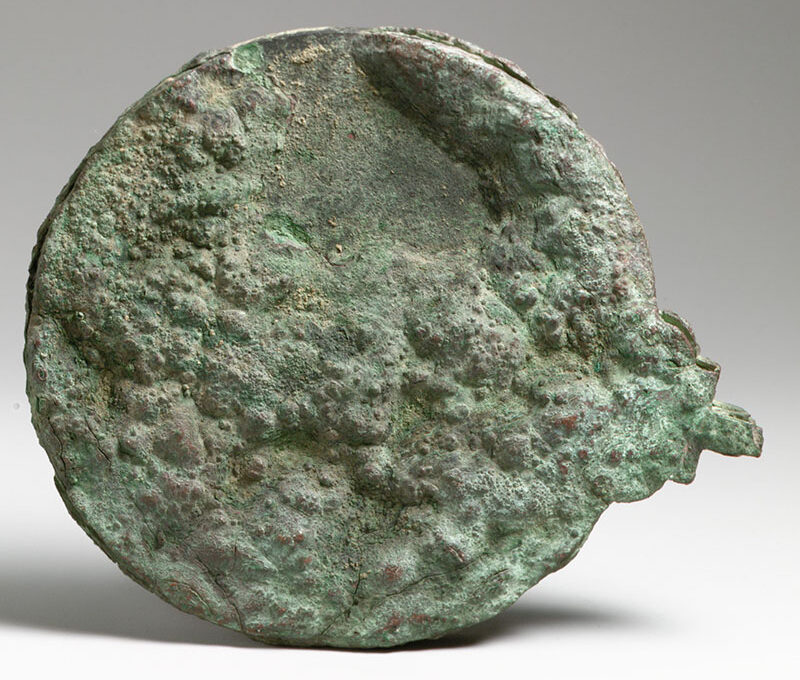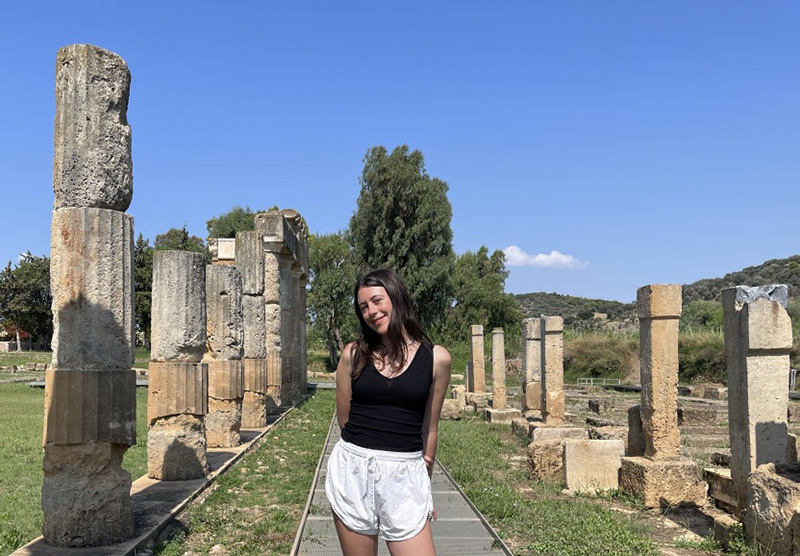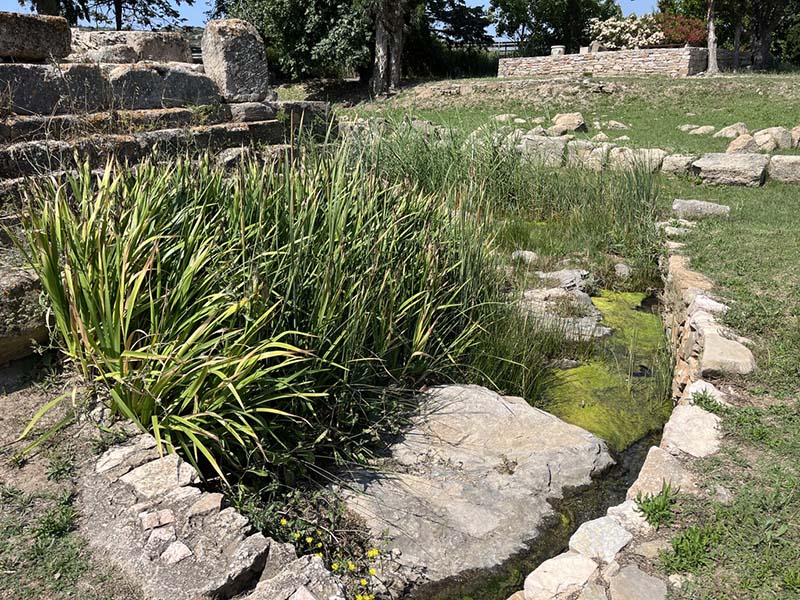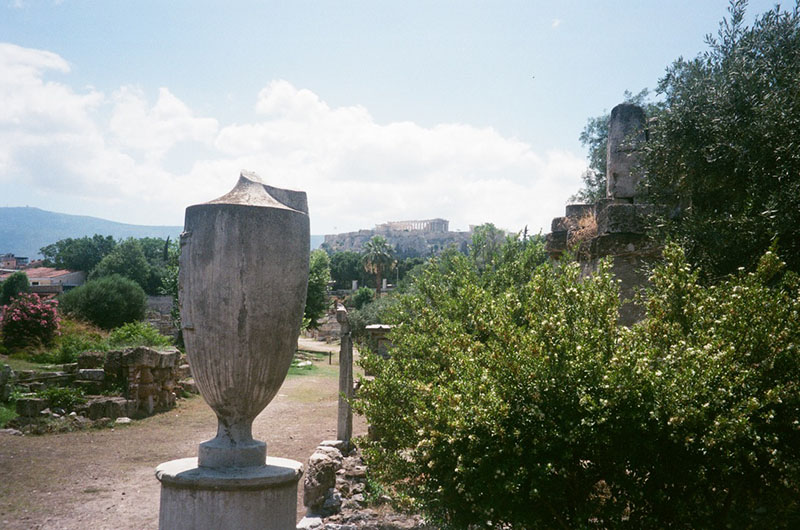Ancient Greek Mirrors from the Attic Sanctuary of Artemis Brauronia
by Elliot Camarra
With the help of a generous Research Grant from the Decorative Arts Trust, I was able to spend a week in Greece studying ancient bronze mirrors, the subject of my thesis for the Bard Graduate Center. Of primary interest were mirrors from the 6th and 5th centuries BCE deposited at the Sanctuary of Artemis Brauronia, an important site of female worship located on the coast of the Eastern Attica region of Greece.
I selected and examined 16 mirrors and mirror fragments unearthed at Brauron. While the exact nature of the relationship between these objects and the sanctuary is unknown, ancient inscribed inventory records associated with the site attest to their frequent offerings as votives. After formerly approaching these objects through printed material alone, the opportunity for object-based research thoroughly enriched my project. The chance for close-looking deepened my understanding of Archaic and Classical Greek mirrors, from aspects as basic as scale and weight to the effects of such attributes on haptic encounters with these objects.
Studying Brauronian votive mirrors in person strengthened my understanding of mirror typologies and manufacturing techniques and allowed me to consider their highly varied metallic surfaces. Where some retained traces of diverse decorative techniques, others demonstrated long term material transformation resulting from a range of archeological contexts.
This research trip also helped me to conceptualize the ways in which these objects may have been viewed and used in ancient Greece more broadly. I visited the archaeological site of Kerameikos, the location of an important ancient cemetery (and of the potter’s quarter); the Cycladic Museum; the National Archeological Museum; and the Acropolis Museum—all providing unique examples of ancient mirrors as well as varied temporal scopes and cultural contexts in which to consider them. At the Acropolis Museum, I was able to visit the cultic statues belonging to Brauron’s urban outpost, founded on the Acropolis in the mid-6th century BCE.
With the support of the Decorative Arts Trust, I was able to lay the groundwork for my thesis, scaffolded by critical physical access to the materials at the center of my studies, the landscape into which they were deposited, and the expansive material culture of the broader social world that surrounded them.
Elliot Camarra is an artist and researcher based in New York. She will receive her Masters degree from Bard Graduate Center in May.
About The Decorative Arts Trust Bulletin
Formerly known as the "blog,” the Bulletin features new research and scholarship, travelogues, book reviews, and museum and gallery exhibitions. The Bulletin complements The Magazine of the Decorative Arts Trust, our biannual members publication.
Click Images to Enlarge
Did you know that clicking on the images in Bulletin posts will allow you to get a closer look? Simply click on an image, and a larger version will open in a pop-up window.











